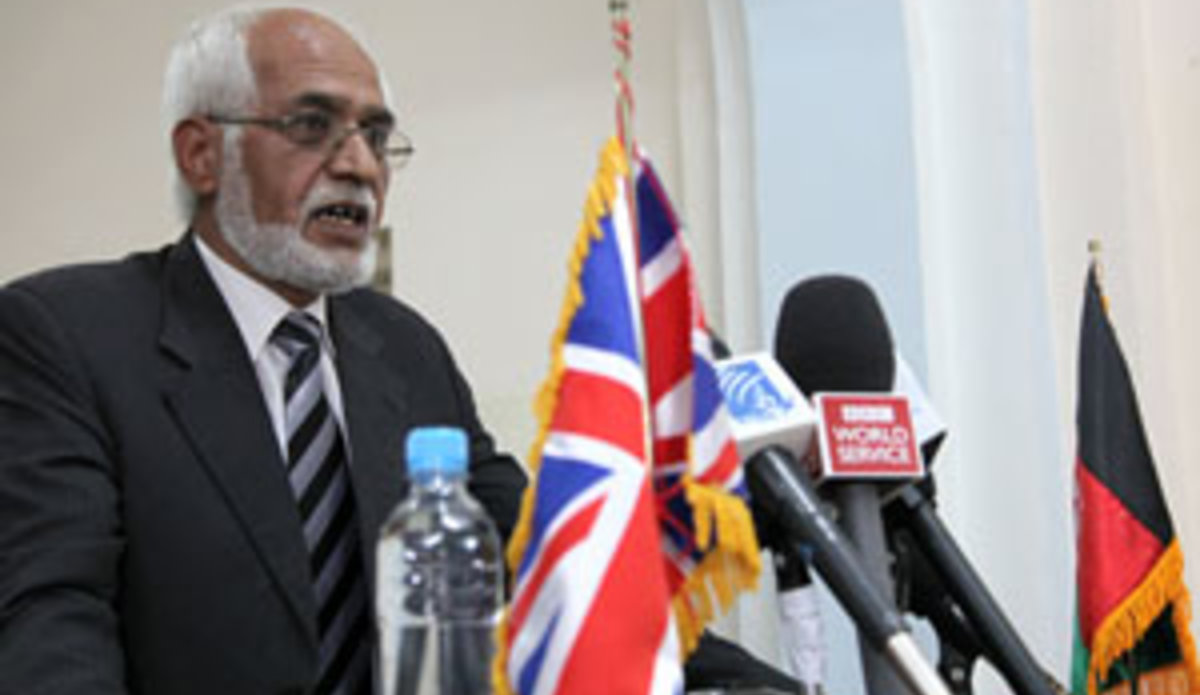Afghans must try their best to preserve their own cultural heritage
KABUL - As a part of the Mission’s campaign to raise awareness about Afghanistan’s rich past, Kabul Musuem Director Omara Khan Massoudi spoke to UNAMA on his desire to see the musuem rise from the ashes.
Afghanistan has a very ancient civilization. From 1922, when the first protocol was signed between our government and the French government, scientific excavations started. According to that protocol, French and Afghan archeologists started excavations on different ancient sites.
They sent the discovered artefacts to the National Museum of Afghanistan from 1922 to 1992. At that time, we kept more than 100,000 pieces which belonged to different periods of our history. Among these artefacts, 10 per cent were put on display, while 90 per cent were stored.
Unfortunately, the central government at that time lost its position because of the revolution. Illegal excavations started in Afghanistan. From 1992, when the mujahideen took power, the civil war started in Kabul. In the south-west part of the city, in which our museum is located, most of the artefacts were looted during the civil war, especially between 1992 and 1995.
The National Museum caught fire in May 1993 after rocket attacks. The second floor of the museum was completely abandoned. Except for a small number of artefacts, we lost all of the showcases and the screens that we used for exhibitions.
After that, when the central government brought this area under its control, the Ministry of Information and Culture assigned museum staff to register the main pieces which belonged to the museum. With the help of Nancy Dupree’s SPACH organization (Society for the Preservation of Afghanistan’s’ Cultural heritage) we completed the registration in 2000. Statistics showed that 70 per cent of artefacts in the museum were taken by looters to neighbouring countries and from there to the black market in Asia, Europe and the United States.
In some parts of Afghanistan, illegal excavations are still going on. For example, four years ago, one Afghan looter transferred some artefacts to the UK. The police in the UK seized those artefacts at the airport and then informed our ministry and the museum association.
We requested the UK authorities to return these artefacts back to Afghanistan. We got these artefacts back in February 2009. In total there are around 2,000 pieces. The total weight of these artefacts is three and half tons. This is just an example of looting activities in Afghanistan.
During the three decades of war, some of the historical monuments were completely damaged by explosions and rockets. Some artefacts were looted from ancient sites and museums. After the collapse of the Taliban, the new government tried to stop the illegal excavations across Afghanistan. The Ministry of Interior has organized around 500 special police to stop these kinds of activities in eight provinces where ancient sites are in danger or face the illegal excavations.
But I think it is not enough, it is a big challenge for the Afghan government and our people. It is their job. They need to try their best to preserve their own cultural heritage anywhere in Afghanistan. They have to hold hands together to stop these kinds of activities.
One thing is really important in my opinion: We need to make it clearer to Afghans to learn about their past, the ancient civilizations and preservation of these ancient sites. As you know, most Afghans are uneducated. When some looters want to get these artefacts, they just pay a little money to the villagers. These villagers don’t know the true value of these artefacts. This is our government's responsibility to give more information to these people. Afghans need to be more careful about the preservation of their cultural heritage.
After the collapse of the Taliban, we have had the support of the international community, especially the direct support of UNESCO, the Ministry of Information and Culture, and the museum association. We requested UNESCO to help us with the return of looted artefacts.
In 2002, the Ministry of Information and Culture with the support of UNESCO organized a two-day long seminar. They invited many scholars to discuss how to solve the current archaeological problems. After that, they paid attention on the rehabilitation of the National Museum and how to preserve the ancient sites and how to deal with historical monuments.
Now the museum stands on its own feet. We have sent some artefacts to international exhibitions. Since 2006, our artefacts have been exhibited in France, Italy, Amsterdam and the United States. People from all over the world went to visit these exhibitions. It was a good opportunity to introduce our cultural heritage and ancient civilization to the world.
Since 2004, we have started to computerize all our main pieces with the support of SPACH and UNESCO. We want to build a database for the museum in order to have a close cooperation with famous museums all over the world. So far we have registered more than 50,000 pieces.
At the same time, we are trying our best to help local museums in different provinces such as Herat, Ghazni, Khost, Kapisa, and Bamyan. In some provinces, we don't have a building for a museum yet. In some provinces, we have land but we are looking for funds to build the museums. This would be very important for the local people.
As you know, for Afghans it is difficult to visit the National Museum because of financial problems. If we have local museums, the younger generation will visit museums. They will know about the value of the historical artefacts and they will be more careful about the preservation of their cultural heritage. We are still weak in this area.
Omara Khan Massoudi spoke to UNAMA’s Kangying Guo
 UN
UN







